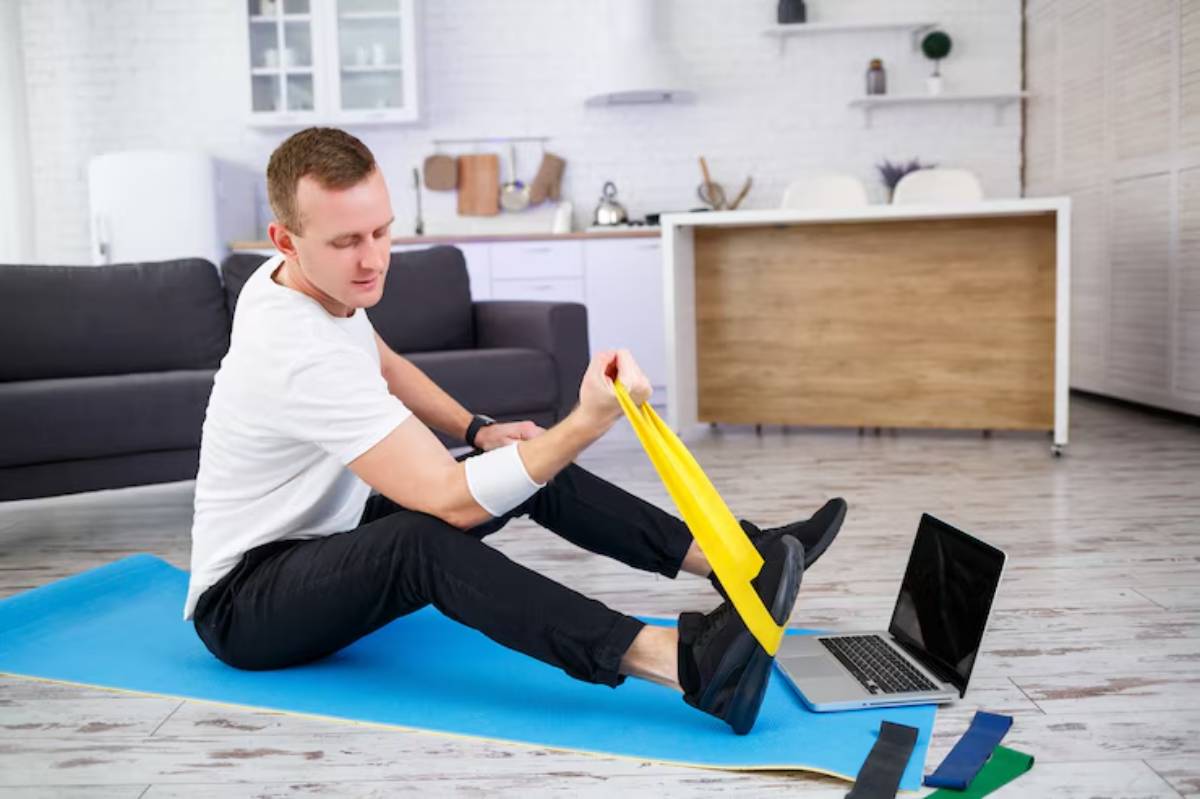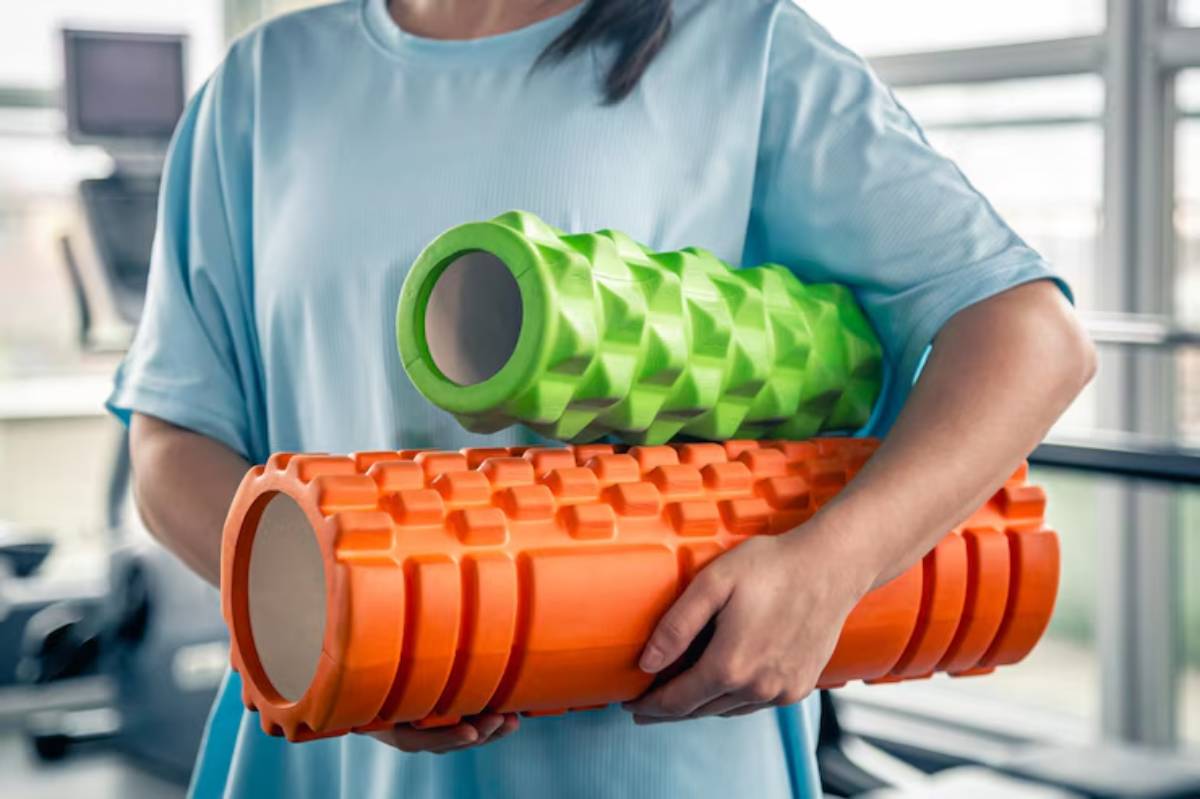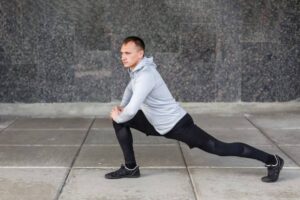The Fitness Blog

How to Use Mobility Work to Prevent Stiffness
You step out of bed, stretch your arms, and there it is — that familiar tightness in your back or hips. It’s not pain exactly. It’s more like your body’s whispering, “I’m not quite ready yet.” Whether you’re an active gym-goer, office-bound professional, or somewhere in between, that stiffness signals one thing: your body craves mobility.
Mobility isn’t just a buzzword in fitness circles. It’s the difference between moving with ease and wincing through your day. The good news? You can improve it daily with short, strategic exercises. This guide will teach you how to make mobility for stiffness a practical, enjoyable part of your life, no matter your fitness level.
What Is Mobility Work — and Why Does It Matter?
Mobility refers to your joints’ ability to move freely through their full range of motion. It’s not the same as flexibility, which is about muscle length. Think of mobility as a combination of strength, control, and flexibility — it’s what allows you to move well.
Why stiffness happens
Stiffness creeps in due to:
- Sedentary routines (hello, desk jobs)
- Intense training without enough recovery
- Ageing, which naturally reduces joint elasticity
- Stress, which tightens muscles unconsciously
Without mobility work, these factors limit how well you move, which over time can lead to pain, injury, and decreased performance.
Mobility training addresses these issues proactively, making it a cornerstone of any smart joint health workout strategy.

Quick Guide: Mobility Work for Stiffness Relief
- Assess Your Needs — Identify tight areas (hips, shoulders, spine, ankles)
- Start Small — 5–10 minutes a day is enough to build consistency
- Use Dynamic Movements — Controlled circles, lunges, rotations
- Incorporate Breath — Inhale to create space, exhale to deepen movement
- Stay Consistent — Mobility gains fade quickly if you stop moving
Step-by-Step Guide: Building a Daily Mobility Practice
1. Identify Your Trouble Spots
Start by noticing where you feel restricted — morning stiffness, during workouts, or after long sitting sessions.
Common stiff areas include:
- Hips and hip flexors
- Thoracic spine (upper back)
- Ankles and calves
- Shoulders and neck
This awareness will help you tailor your routine.
2. Begin With Joint Circles and Controlled Articular Rotations (CARs)
Start every session with controlled joint movement:
- Neck circles
- Shoulder rolls
- Hip and ankle circles
- Wrist mobility
These prepare your joints by lubricating them with synovial fluid, much like warming up an engine.
3. Layer In Dynamic Stretching
Dynamic mobility drills involve movement through ranges of motion.
Think:
- Leg swings (front-to-back and side-to-side)
- Arm circles and cross-body swings
- Walking lunges with a twist
- Cat-cow for spinal articulation
These help to activate stabilising muscles, not just passively stretch.
4. Focus on Multi-Planar Movements
Your body doesn’t move in straight lines — so neither should your mobility work.
Add rotations and lateral moves:
- World’s Greatest Stretch
- 90/90 hip switches
- Thoracic spine rotations
- Lateral lunges and Cossack squats
These improve coordination and control, especially under tension.
5. Pair With Breath and Control
Mobility isn’t about pushing to your limits — it’s about control.
Breathe consciously:
- Inhale to prepare and expand
- Exhale as you deepen into the movement
This syncs your nervous system with your muscles and allows for smoother, safer gains in flexibility.

6. Integrate Tools When Needed
Foam rollers, resistance bands, and massage balls can amplify your efforts:
- Use bands for joint distraction and shoulder mobility
- Roll your calves or quads to ease muscle tension
- Use a lacrosse ball under the feet or glutes to release fascia
Just ensure tools don’t replace active movement — they’re supporting acts, not stars.
To build a reliable recovery habit, you may also want to integrate foam rolling for tight areas, especially after training. This can pair well with structured self-myofascial release techniques designed to support daily mobility goals.
Pro Tip: Incorporate mobility work into your warm-up or cooldown — or sneak it in during Netflix sessions or work breaks.
Important: Stretching a cold body can cause more harm than good. First, do a few minutes of light movement.
Warning: Don’t treat mobility like static stretching. Bouncing or pushing into pain may cause joint irritation rather than improvement.
Best Practices to Improve Flexibility Daily
Make It Routine — But Not Rigid
You don’t need to do a 45-minute mobility class. Even 5 minutes a day, repeated consistently, yields results. Think habit, not workout.
Pair With Strength for Long-Term Gains
Mobility without stability is short-lived. Anchor your new range of motion with light resistance or bodyweight control:
- Isometric holds in deep stretches
- Strengthening the end-range with bands or weights
- Functional flows that mimic daily movements
Use Real-Life Cues
If your lower back tightens after a long drive, make hip openers part of your travel prep. Stiff shoulders from work? Build a lunch-break mobility reset.
On days when you’re not training intensely, pairing mobility work with a thoughtfully designed recovery day structure can help reduce stiffness while enhancing joint health and movement longevity.
Use Case: Sam’s Desk-to-Dynamic Routine
Sam is a 42-year-old software engineer who runs twice a week and often wakes with tight hips and shoulders.
His solution:
- Morning: 7 mins of joint circles + cat-cow + 90/90 transitions
- Midday: Shoulder CARs and band pull-aparts at his standing desk
- Evening: Foam rolling glutes and quads while watching TV
After two weeks, Sam noticed improved posture, fewer post-run niggles, and even better sleep.
This isn’t magic. It’s just movement — done often and with purpose.
FAQs
How long should mobility work take each day?
Start with 5–10 minutes daily. Over time, you may naturally extend sessions based on how you feel and where you need to focus.
Is mobility the same as stretching?
No — stretching improves muscle length, while mobility combines strength, control, and flexibility around joints. Think of mobility as active, not passive.
Can I use mobility work as a warm-up?
Absolutely. Dynamic mobility exercises are great for preparing your body before strength, cardio, or even yoga sessions.
What’s the best time of day to do mobility work?
Anytime. Morning routines can ease stiffness. Midday helps break up sedentary time. Evening can aid relaxation and sleep.
Can mobility work replace strength training?
Not exactly. They complement each other. Mobility opens the door; strength training keeps it open.
Take Back Your Range — One Move at a Time
Stiffness isn’t a life sentence. It’s your body asking for attention, and daily mobility work is how you respond.
By learning how to improve flexibility daily and investing just a few minutes each day in your joint health, you’re not only reducing stiffness — you’re future-proofing your movement, preventing injury, and enhancing everything from workouts to workdays.
You don’t need perfect form or long routines. You just need movement that feels good and fits your life.
So start today. Roll your shoulders, move your spine, find your tight spots, and make them mobile again. Your body will thank you—not just today but for years to come.









